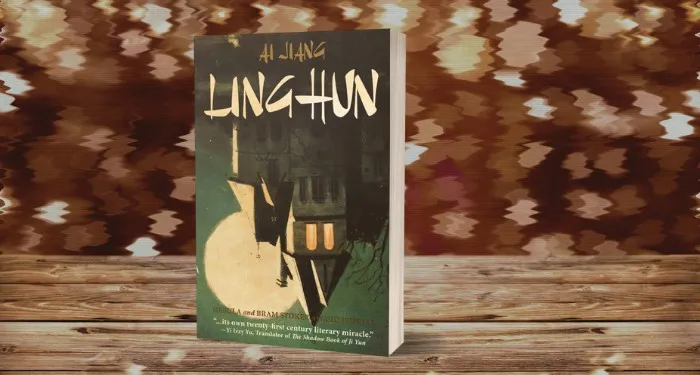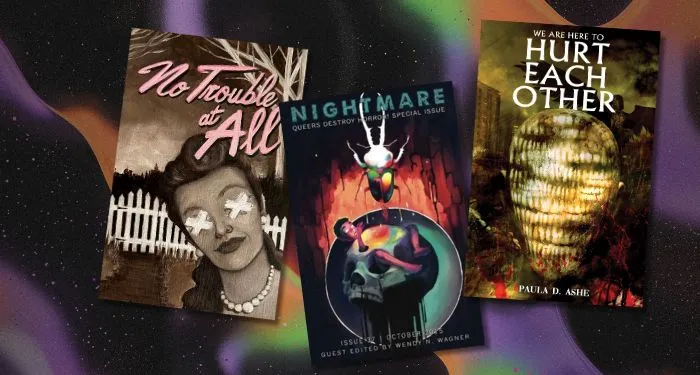In 1984 the three hundredth anniversary of Jean-Antoine Watteau’s birth was celebrated with an extraordinary retrospective of his paintings, drawings, and prints, seen first in Washington, then in Paris and Berlin. That memorable exhibition, organized by the National Gallery of Art and the Réunion des Musées Nationaux, assembled some 73 paintings, 143 drawings, and 8 etchings, and it was accompanied by a magisterial 580-page catalog as well as an international symposium.1 In his review of the exhibition Francis Haskell concluded, “It was given to [Watteau], as to no other single artist before or since, to enable much of his own century to see itself through his eyes—and for posterity to accept this vision as genuine.”2
No such fanfare accompanied the tricentenary of Watteau’s death in 2021, when the world was still emerging from the shutdowns of the Covid-19 pandemic.3 However, in the past year Watteau has been the focus of significant exhibitions in Chantilly, London, and Paris. Last spring at the Château de Chantilly—which cannot lend works from the founder’s collection to any exhibition—the gallery’s four paintings and six drawings by the artist, acquired between 1861 and 1891 by Henri d’Orléans, duc d’Aumale, served as a point of departure for a group of exceptional loans. Two of Chantilly’s most admired Watteau paintings—Le Donneur de sérénades and L’Amante inquiète—were restored and cleaned in preparation for the show, with a spectacular transformation in the appearance of the latter, a well-preserved work on panel that now has an altogether unexpected luminosity, clarity, and freshness.
All the Paris museums participated generously in this exhibition, and none more so than the Louvre, which lent one of the greatest of its fifty-one Watteau drawings, the intensely moving Three Heads of a Young Man, which has a naturalism and sympathy that are communicated through the artist’s unsurpassed virtuosity. Dated to around 1717–1718, the drawing was undoubtedly made from life, the model likely a servant attached to one of the grand households that Watteau frequented. The regent’s Edict of October 1716, “concerning Slaves from the Colonies,” had recently legalized the importation of enslaved Black servants attached to Frenchmen with colonial connections. As long as they were registered with the admiralty and raised in the Catholic faith, enslaved domestics could be retained by their masters indefinitely without the right to petition for their freedom, which gives Watteau’s tender depiction even greater poignancy.
Three Heads of a Young Man had been one of no fewer than seventy-nine drawings by Watteau—sixty-one of which are considered original today—owned in the nineteenth century by a wealthy London corn merchant, Andrew James. The Gentleman’s Magazine noted in its obituary in September 1854 that James was
a man of the highest integrity, mild yet determined…[with] a keen perception of all that is beautiful in nature and fine in art, who possessed some of the choicest drawings of the old and modern masters that are to be found in this country.
In 1856 his collection was shown by his widow to Gustav Friedrich Waagen, the German art historian and former director of the Berlin Museum, who included a description of it in his popular Galleries and Cabinets of Art in Great Britain (1857). Waagen noted that the collection was renowned primarily for its Rembrandts and also celebrated for works by the “clever painter” Watteau, with “a large number of studies from nature for his pictures, chiefly on grey [sic] paper, executed in red, black, and white chalks, with great breadth and mastery, and with the utmost animation of conception.” “In the hands of Mrs. James,” he concluded, “all these treasures are preserved with more than common reverence.” The collection, maintained intact by the couple’s unmarried daughter, Sarah Ann James, was sold at auction at Christie’s in June 1891. Thirteen of the Watteau drawings entered the British Museum shortly thereafter. They represent today just under one third of its forty-four works by him, all of which were on view during the summer in a beautiful show.4
“A New Look at Watteau, an Actor with No Lines: Pierrot, Known as Gilles” at the Louvre was the most significant of the three exhibitions focused on the artist. This superb show of sixty-four works was devoted to Pierrot, one of Watteau’s greatest, most moving—and most enigmatic—paintings. It was accompanied by an excellent catalog by Guillaume Faroult, with an indispensable section by Clarisse Delmas and Bénédicte Trémolières on the restoration of the canvas by the Louvre’s conservation department, completed in 2024. The undertaking doubly fulfilled the exhortation by Pierre Rosenberg, doyen of Watteau scholars, in 1984 that “this painting deserves to be the subject of its own book or exhibition.”
Watteau’s monumental work, painted around 1718–1719, shows five actors from the comic theater and a donkey outdoors in a sylvan setting of parasol pines and poplars, with the stone herm of a faun emerging from the leaves. (We are perhaps on the grounds of an aristocratic country house.) The central, dominant figure is Pierrot, arms hanging by his side, dressed in his traditional white costume: a taupe felt hat over a white skullcap, a cotton jacket whose sleeves are too long and bunch at the elbows, satin trousers falling above the ankles, and splendid rose ribbons on his satin shoes. Dark-eyed and dark-haired, with sweeping eyebrows, Watteau’s Pierrot is a young man who does not yet need to shave regularly. His expression is serious but inscrutable. Unlike his actual counterparts on the stage, who generally performed with white powder on their faces, Watteau’s Pierrot is portrayed without any makeup.
Pierrot is shown standing on a knoll or the edge of a hill. Behind and below him are figures whose identities are less straightforward. Seated on the donkey at left is a man in a ruff, black skullcap, and black cape, with a large nose and a grinning, self-satisfied expression, who has been identified as the cynical valet Crispin, a stock comic character from the Comédie-Française. At the lower right are three actors, the one closest to Pierrot wearing the crested headpiece associated with Momus, god of folly. The young man at the far right gently guides the donkey with the rope in his left hand. He wears a glorious salmon satin beret and matching jacket, and his fetching companion is attired in a striped blouse and green dress. These figures cannot be associated with any characters from the Italian or French theaters. The man at the right has at times been identified as Mezzetin, Pierrot’s guitar-playing companion, but he is not shown in his customary striped outfit.
Two preparatory drawings have been associated with the composition. A red and white chalk drawing in Munich’s Graphische Sammlung, dated to 1716, was used for the head of Crispin, and a study in three chalks and brown wash in a private collection, dated to 1716–1717—and unseen for decades—was preparatory for the head of the actress, her eyelashes delicately delineated in both painting and drawing. As was his custom, Watteau had recourse to drawings made from his models and kept in bound volumes as source material, and these might predate the composition he was working on by some years.
It has long been pointed out that Pierrot was not referred to or discussed in a single eighteenth-century account, although Watteau was unique among French artists of his time in having several biographies written by close friends that appeared in the decades following his death in 1721. Nor was this monumental canvas engraved for the compendium of 144 paintings published in 1734 by Jean de Jullienne, his friend, patron, and promoter. Nevertheless, with the notable exception of one specialist, the attribution of this work to Watteau—and its dating to 1718–1719, after he was received into the Académie Royale and before his reckless decision to move to London for a year, which no doubt aggravated the tuberculosis that led to his death—has been universally accepted.
It has not been possible, despite tenacious sleuthing, to associate the painting with any commission during Watteau’s lifetime. Its scale (and monumentality) suggests that Pierrot might have served as a decoration for a salon, a staircase, or a private theater. It is too refined and well preserved to have functioned as a fairground sign or a billboard for a shop or café. Nor can the painting be associated with a particular actor or performance. While not referring explicitly to this picture, the connoisseur and collector Antoine-Joseph Dezallier d’Argenville, in his life of Watteau published in 1745, described the artist’s last days, spent at the home of a well-placed friend in Nogent-sur-Marne, a village seven miles east of Paris. Watteau was especially fond of the handsome young curate of the parish, for whom he may have painted a Crucifixion on his deathbed and who, according to Dezallier d’Argenville, had modeled for the comedic character of Gilles in a painting by the artist. Until 1984 the central figure in Pierrot was identified as Gilles, and the painting was known as Gilles during the nineteenth and early twentieth centuries.
Gilles is first recorded in the collection of Napoleon’s director of the Louvre, the diplomat, author, and artist Dominique Vivant Denon, who is thought to have acquired it around 1804 for very little money from the shop of a marchand de bric à brac on the nearby place du Carrousel. A curious drawing by Denon in the Morgan Library and Museum’s collection suggests that he might have known Watteau’s painting some years earlier. It is a political satire that commemorates the failure in June 1795 of royalist and British troops on the Île d’Yeu in Brittany, under the leadership of the comte d’Artois and his sons, the duc d’Angoulême and the duc de Berry, to launch a counterrevolutionary offensive in the Vendée. The cowardly d’Artois returned to exile in Britain by the end of the year. In Denon’s drawing, he is transformed into Watteau’s Pierrot, now a quaking figure with a crown on his head and prominent chicken legs—une poule mouillée (a drenched chicken), one who is weak and feeble. (The term remains in use today.)
Watteau, along with all the major French artists of the ancien régime, had become a derided, forgotten master by the end of the eighteenth century. Jacques-Louis David’s students reportedly threw pellets of bread at The Embarkation for Cythera, such was their disdain. Gilles was acquired at Denon’s posthumous sale in May 1826 by his nephew for a derisory sum, and it was not until the middle decades of the nineteenth century that the reviled artists of the Rococo experienced a thorough if somewhat romantic rehabilitation. Whereas in the 1840s and 1850s the revival of the taste for the art of the ancien régime had been associated, somewhat unexpectedly, with left-wing politics and republican affiliation, by the 1880s, as Francis Haskell noted, it had been thoroughly adopted by bankers, industrialists, and “the international moneyed aristocracy.”
By far the greatest collector to have rehabilitated Watteau and the eighteenth-century French school was the doctor and amateur painter Louis La Caze, who acquired Gilles in 1838 for 2,500 francs. Before bequeathing his collection of 583 paintings to the Louvre in 1869—where they were installed in a gallery created for them in the west wing of the Cour Carrée—La Caze had allowed the public access to his home on the rue du Cherche-Midi and lent many of his eighteenth-century French masterpieces to an exhibition at the Galerie Martinet that ran for six months in 1860. (Manet and Degas were among those who visited.)
In the show at the Louvre, Faroult included paintings by Watteau’s students as well as a section devoted to Pierrot’s bohemian legacy in the middle decades of the nineteenth century, notably the performances of the actor and mime Jean-Gaspard Deburau at the Théâtre des Funambules on the boulevard du Temple and Nadar’s photographs of Deburau’s son, Charles, as the melancholic clown, which won a gold medal at the Exposition Universelle in 1855. Pierrot’s various incarnations in fin-de-siècle and twentieth-century painting, photography, and filmmaking, as well as his influence on a selection of contemporary artists, constituted the exhibition’s epilogue.
The current title of Watteau’s painting—Pierrot—and the identification of its theatrical characters, notably Pierrot himself, were established only in 1984 by François Moureau, the literary historian and authority on the French theater in the seventeenth and eighteenth centuries. While Watteau is primarily celebrated for his creation of the fête galante—a new genre in French painting that showed young, beautifully dressed lovers in elegant parks (accompanied by the occasional children and dogs), attired in an assortment of modern, theatrical, and historical costumes and engaging in various modes of courtship and seduction—from his arrival in Paris in 1702 his work was no less influenced by the contemporary theater. Characters from the commedia dell’arte had become popular in France through the plays and farces initially performed by the Comédie-Italienne. Born in Valenciennes in the north of France, Watteau came to Paris to work for an obscure painter of decorations for the Opéra and soon apprenticed with Claude Gillot, a much more successful painter, draftsman, and printmaker whose specialty was scenes from the comedic theater.5 Though master and student soon fell out, Gillot was a significant influence on Watteau’s early work.
The theatrical scene in Paris in Watteau’s day was thriving, if contentious, with three major institutions enjoying royal privileges that gave them monopolies on the spoken and sung word: the Académie Royale de Musique, founded in 1669; the Comédie-Française, founded in 1680; and the Comédie-Italienne, founded in 1660. Throughout the period there were also vibrant, seasonal fair theaters that performed in large commercial spaces and offered burlesque entertainments for a diverse audience. The foire Saint-Germain on the Left Bank performed in February and March, the foire Saint-Laurent on the Right Bank in August and September, and the less consequential foire Saint-Ovide on the place Vendôme only for the month of August. One notable innovation in these popular theaters was the “parade,” or teaser, in which the actors performed brief skits on outdoor balconies for free to entice people to buy tickets. Watteau, who owned a box of theatrical costumes in which he dressed and posed his models, was a keen admirer of these performances.
After putting on a play in the spring of 1697 that insulted Madame de Maintenon, Louis XIV’s morganatic wife, the Comédie-Italienne was summarily expelled from Paris. The troupe’s main characters—comic types such as Harlequin, Mezzetin, Columbine, Scaramouche, and Pierrot—were soon co-opted by the playwrights and impresarios of the fair theaters, in performances that might be characterized as off-Broadway meets the Cirque de Soleil. In the first decades of the eighteenth century the royal theaters, notably the Comédie-Française, were vigilant in going to court to preserve their monopoly. (In 1719 they succeeded in shutting down the fairground performances entirely.) The fairground players were not permitted to perform entire plays or even speak dialogues, and they responded by using signboards for speeches and engaging in mime, acrobatics, and dance. Their energy and ingenuity soon attracted some of the most talented playwrights. Satirists such as Alexandre Jean Baptiste Dufresny and Alain-René Lesage created vaudeville productions for them, and their repertory was also performed in elite, private théâtres de société. They were such a success that in July 1715 the Mercure Galante noted that both the Comédie-Française and the Opéra were deserted. Lady Margaret Pennyman, an English visitor to Paris in August 1720, wrote in her diary:
The best Diversion I met with of this kind [of theater] was at St Lawrence Fair, which is kept every Year without St Martin’s Gate: Here are great Numbers of Shops, with all Sorts of Nicknacks and Curiosities, with Raffling, Gaming, and Lotteries, and abundance of Booths for Farces, Rope-dancing, and Tumbling, which is the best they can perform.
Coming upon the booth of the actor-manager François Moylin, known as Francisque, whose players Watteau may have seen perform in London a couple of months earlier, Pennyman observed that it was “so crowded, with the best Quality, that there was no Room for us.”
The stock characters of the exiled Comédie-Italienne were reimagined by the playwrights and performers of the fair theaters and inspired Watteau throughout his career. An early masterpiece, the elegiac Artist’s Dream (see illustration below), dated to around 1710–1712, shows the artist in a mysterious parkland, collapsing in front of his easel in a gesture of distress. Four men in theatrical dress join hands in dance, while the airborne Muse of Comedy points to a gaggle of actors from the Comédie-Italienne crowded together on a cloud beneath her. Tall, lanky Pierrot, sporting a rose-colored silk cap, stands at attention at the far right. Almost the entire cast of Watteau’s future repertory of theatrical paintings is included here.
As Judy Sund noted in a magisterial survey of Watteau’s depictions of Pierrot and the myth of the sad clown that they inspired, the artist “afforded Pierrot a pride of place the character did not hold in theatrical productions.”6 Watteau could not have seen an actual performance of the Comédie-Italienne until the company returned to Paris in 1716; it was the fair productions that offered inspiration for some of his most sympathetic compositions. And from being the sidekick and butt of the scheming Harlequin, in his portrayal by the actors of the popular theater Pierrot had emerged as both a lover and musician (and is shown as such in several of Watteau’s paintings). Most notably, as François Moureau first observed, Pierrot became the standard-bearer of the fair theater—“une sorte de porte-drapeau de la Foire.”
After finishing Pierrot, Watteau left Paris for London and produced at least two major works inspired by the Italian comedians in which Pierrot assumes a leading role. The National Gallery of Art’s Italian Comedians was painted for Richard Mead, physician-in-ordinary to King George II, and as many as sixteen drawings may be associated with it. We see Pierrot standing proudly at the center of the company of fifteen actors taking their bows. While the attribution to Watteau of this canvas had been questioned in the past, technical examination and a judicious restoration in the 1980s established its authenticity beyond dispute. It has recently been proposed that Watteau painted the curtain call of a performance by a visiting French troupe that he might have attended in person. Between March and June 1720 the fair players led by Francisque made their third visit to London, “ce charmant pays des Guinées.” On June 9, 1720, the celebrated Pierrot Anthony Francis Roger performed in a benefit attended by the Prince of Wales; twelve days later, on their last night in London, Francisque’s troupe delivered Les Adieux d’Arlequin, Pierrot et Columbine. Watteau, who returned to Paris that summer, may have been in the audience at the King’s Theater, Haymarket, on both evenings.
A second painting that Watteau made in London, also entitled The Italian Comedians—acquired by the J. Paul Getty Museum in 2012—remains controversial. A large canvas with five figures, it shows an engaging, boyish Pierrot, with blond hair and ruddy cheeks, holding out his hat in his right hand as if seeking a donation. To his left, a guitar-playing Mezzetin takes a bow. Harlequin, mustachioed and masked in black, can be seen hiding behind them. There is no question that the beautifully executed central figure of Pierrot is by Watteau. A preparatory drawing for this figure with his outstretched arm in the Teylers Museum, Haarlem, shows the actor, but with a pinched and mean-spirited expression quite unlike the sympathetic clown in the finished work. Infrared reflectography has confirmed that Watteau initially followed his drawing and painted Pierrot with precisely the same face but altered the canvas as he completed it. The surrounding figures are not handled as suavely. The faces of the two actors at right are painted more broadly—they might have stepped out of a canvas by Frans Hals. Faroult, in his discussion of the Getty picture, which he catalogs as “attributed to Watteau, Jean-Baptiste Pater and an anonymous collaborator,” expresses the hope that the “confrontation” with the Louvre’s Pierrot in the exhibition would help resolve the issue once and for all. In fact, as Alan Wintermute first proposed in 2012, seeing the paintings from the National Gallery of Art and the Getty in fairly close proximity made it possible to confirm that they are both by the same hand, undeniably Watteau’s alone.
As the Louvre’s exhibition demonstrated, Pierrot is unquestionably the greatest of Watteau’s theatrical paintings. It is distinguished by its scale, by its maestria, by the sympathy with which each character—including the donkey—is portrayed, and by the beauty and youthful ardor of its figures. As noted, among the trio at right only the wide-eyed man closest to Pierrot can be associated with a character from the comic theater. Although we cannot see if he is holding Momus’s tambourine and marotte—a stick with a jester’s head—his crested headwear confirms the designation. The beautiful couple next to him are likely stand-ins for lovers who interact onstage with the comic types.
But what of the donkey, with his dainty pink bow and a tear falling from his right eye? In medieval imagery, an unfaithful spouse might be obliged to mount a donkey and ride backward as punishment, which is clearly not the case here. “To wash the head of a donkey, one wastes soap and water” was an Italian proverb, dating to the late fifteenth century, advising against investing too much time in futile endeavors. (It is similar to the more brutal English phrase “flogging a dead horse.”) A French iteration provided the title of a parade performed in 1716 in the magistrate Thomas-Simon Gueullette’s private theater at Choisy-le-Roi, entitled L’Éducation de Gille ou A laver la tête d’un âne on perd sa lessive, demonstrating the challenges of trying to improve the behavior of a foolish servant. Even closer in time to the gestation of Pierrot, in 1718 the unlicensed troupe managed by Louis and Marie Gauthier Saint-Edme had introduced its performance of Lesage’s Château des Lutins at the foire Saint-Germain with the spectacle of a poor donkey sliding down a rope on a makeshift gurney to attract audiences. This was lampooned in a satirical song, “L’Âne de la foire” (The Donkey at the Fair): “Long ago Paris admired/Corneille, Racine, Molière;/Lully, in his smallest opera/Knew how to please the town,/These great men of the past/Are now replaced by a donkey.”
While Watteau’s inclusion of the donkey might allude to a recent event at one of the popular fairs, in the exhibition catalog Faroult argues that the composition as a whole can be understood as a commentary on the “querelle des théâtres”—the quarrel of the theaters—that came to a head in 1718–1719. Having enjoyed a “glorious season” in 1718, the fair theater companies were attacked the following year by judicial proceedings that silenced them throughout 1719. The success of Voltaire’s Oedipe spurred the revival of the Comédie-Française, and the recently returned Comédie-Italienne began to include some of the fair’s characters in its productions. Can Watteau’s painting be read as a call for amity and reconciliation among these warring companies? If, as has been established, Pierrot is the primary representative of the fair theater, Faroult’s argument rests on the identification of the smiling figure at left as Crispin. Crispin would not have appeared onstage with comic players from the fair, although Watteau did include him in a small painting on panel, Pierrot, Harlequin and Scapin, in Waddesdon Manor, dated to around 1717–1718.
Taking the argument a step further, Faroult also proposes that Crispin should be read as a self-portrait of Watteau: he associates the figure’s smiling features with a print of a lost drawing showing the artist “with drapery around his head and a laughing physiognomy.” Ingenious though this interpretation is, there are problems with it. It is not at all clear that the man in the ruff collar in Pierrot shares Watteau’s features.7 Moreover, and more consequentially, can the donkey-riding protagonist be identified as Crispin with absolute certainty? The figure who enters from stage right in the Metropolitan Museum of Art’s French Comedians, shown wearing a stiff black cap, a wide starched collar, knee-length boots, and a sword, is indisputably Crispin, as is the heavily jowled man at far right in Love at the French Theater in Berlin’s Gemäldegalerie. (They are identically attired.) The smiling man on the donkey, however, with his skullcap and ruff, does not altogether fit the bill, and in earlier discussions he has been described as the pedantic Doctor from Bologna, or as Scapin, the escape artist—both stock characters from the commedia dell’arte.8
Nevertheless, Faroult’s approach has considerable merit in alerting us to the allegorical potentialities of Watteau’s composition and the nobility of its aspiration and conception—fully in keeping with the artist’s status as a history painter of the Académie Royale. There is an all-embracing humanity, community, and optimism in Watteau’s treatment of these youthful figures, with their lives and loves still fully ahead of them. Perhaps the last word should be left to the artist Peter Doig, whom Faroult discusses at the close of his catalog. Noting that Gilles is shown “somewhat self-conscious and alone,” Doig says that “the expression on Gilles’ face is one of the most sympathetic in all painting…and the body language is also extremely nuanced, suggesting a certain vulnerability without being overt as to what exactly.”




















 English (US) ·
English (US) ·